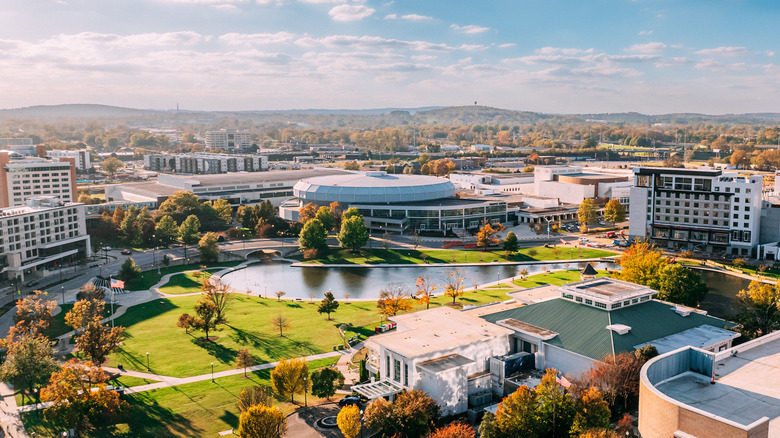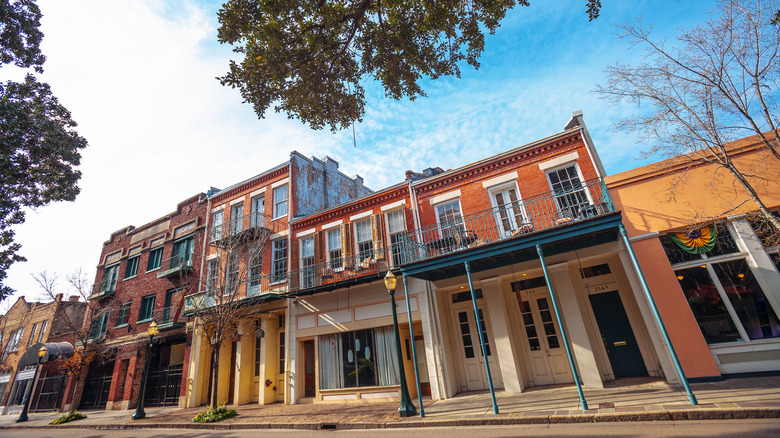The Minimum Salary You Need In Alabama To Be Considered 'Upper Middle Class' Might Surprise You
Living costs shape earning power. In 2023, Alabama's overall price level ran about 10% below the U.S. average — meaning a dollar stretched further there than in most states — according to data published by the Federal Reserve Bank of St. Louis. That 10% discount translates to real money. A $50,000 salary in Alabama bought roughly what $55,000 would purchase nationally. More breathing room for savings, housing, or discretionary spending — without earning more.
According to the U.S. Census Bureau's 2020 Decennial Census, Alabama's median household income at the time was $66,659. Pew Research Center defines middle‑income households as those earning from two-thirds to double the relevant median income, adjusted for household size. Applied to Alabama's median, that put the full range of middle incomes between roughly $44,439 and $133,318 at the time. In 2025, CNBC reported that an upper middle class income in the state spanned approximately $96,486 to $124,054, which is why the minimum salary for an upper middle class lifestyle feels lower here than in states with higher price levels.
And Alabama has plenty of higher-earning households. The U.S. Census Bureau says 29% of Alabama households reported incomes of $100,000 or more in 2023 — only modestly below the national share of 38.9%. A significant slice of Alabama residents already meet or exceed the state's threshold for the upper middle class. That shows how, in the U.S., the term "middle class" doesn't mean what it once did.
What makes Alabama's middle class so accessible?
Alabama's upper middle class ranks among the nation's most accessible. According to CNBC, Alabama ranked fifth lowest among states for the starting income required to join the upper middle class in 2025, behind Mississippi ($109,830), West Virginia ($115,834), Arkansas ($117,546), and Louisiana ($120,046).
Alabama's degree shortage keeps thresholds down. In 2023, only 28.9% of Alabamians aged 25 or older had a bachelor's or higher, the U.S. Census Bureau reported — lagging the national figure of 36.2%. Fewer people with those diplomas means a thinner crowd chasing the higher-paying jobs. As a result, Alabama's upper-middle-class salary threshold aligned with the state's educational profile. Fewer residents qualified for the top-paying roles, which typically drive up income bands in states with larger shares of college graduates.
But job creation in Alabama showed strong momentum. The Alabama Department of Commerce reported that 184 economic development projects across 43 counties created 8,095 new jobs in 2023, adding substantial employment opportunities — real positions, not vague promises. Significantly, many of these new positions commanded salaries well above the state median. According to the U.S. Bureau of Labor Statistics, aerospace engineers in Huntsville earned an average of $67.86 per hour in May 2024 ($141,140 annually), electrical engineers earned $63.59 per hour ($132,260 annually), and computer hardware engineers earned $65.10 per hour ($135,410 annually). These salaries place workers firmly in the middle class even without accounting for Alabama's lower cost structure, which stretches those paychecks further still.
How far does your money go in Alabama?
Alabama's edge in purchasing power comes from real cost gaps in the basics. According to the Bureau of Labor Statistics, the Consumer Price Index for All Urban Consumers in the South increased just 2.6% in the 12 months ending August 2025, a more moderate increase compared to other U.S. regions. Housing shows the clearest win, as the Alabama Association of Realtors reported a median home sales price of $222,811 in August 2025 — a 5.4% drop from the year before. And sales volume actually climbed 6.3%, cutting through the popular myths about homeownership barriers.
Taxes stack the advantage higher. The state income tax tops out at a constitutional maximum of 5%. Rates start at just 2% on the first $500 of taxable income for single filers, move to 4% between $500 and $3,000, and only then hit the ceiling. With the IRS adjusting tax brackets recently, households in Alabama keep more of their pay than folks in high-tax states.
The full cost-of-living picture seals it. The Missouri Economic Research and Information Center ranked Alabama fourth nationally in Q2 2025, with an index of 88.6 against the national baseline of 100. Housing costs sat at 70.8, utilities at 99.6, and transportation at 91.1. Put those together, and every dollar of Alabama's $96,486 upper middle class threshold goes further than it would in states with cost indices north of 110, such as California (142.3), Massachusetts (141.2), or New York (125.1).


